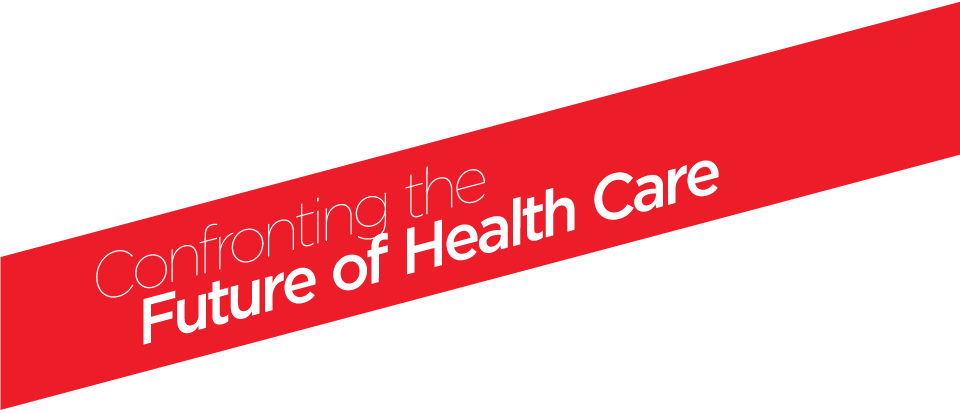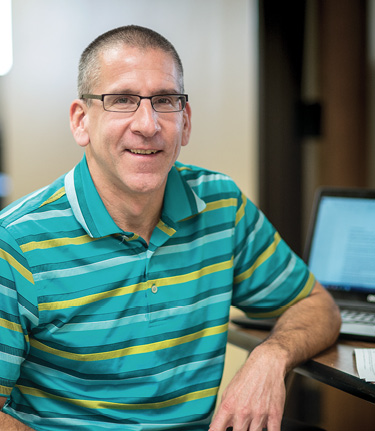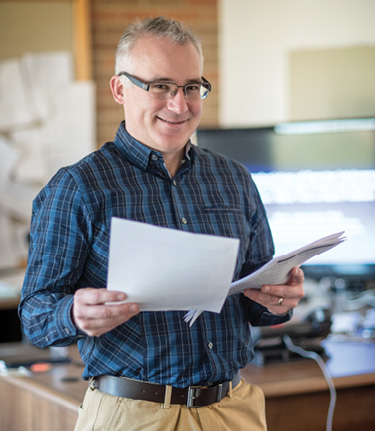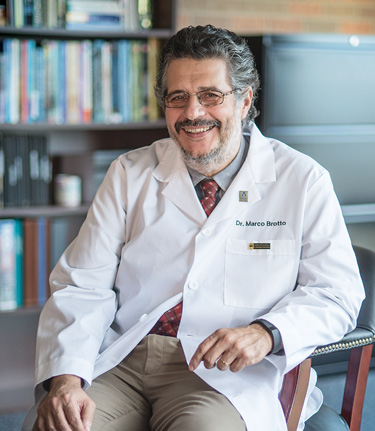Winter 2016: Energy Evolution
From carbon dioxide conversion to landfill mining, researchers at UTA are seeking viable alternative energy options.
Skip to content. Skip to main navigation.
From carbon dioxide conversion to landfill mining, researchers at UTA are seeking viable alternative energy options.
Found in everything from space shuttles to dental fillings, composite materials have thoroughly infiltrated modern society. But their potential is still greatly untapped, offering researchers ample opportunity for discovery.
Within the particle showers created at the Large Hadron Collider, answers to some of the universe’s mysteries are waiting.
Model systems like pigeons can help illuminate our own evolutionary and genomic history.
UT Arlington's tiny windmills are bringing renewable energy to a whole new scale.
The stability of our highways, pipelines, and even manholes is reaching a breaking point.
Scientists believe they have discovered a subatomic particle that is crucial to understanding the universe.
UT Arlington researchers unlock clues to the human body’s most mysterious and complex organ.
UT Arlington researchers probe the hidden world of microbes in search of renewable energy sources.
Wounded soldiers are benefiting from Robert Gatchel’s program that combines physical rehabilitation with treatment for post-traumatic stress disorder.
Tiny sensors implanted in the body show promise in combating acid reflux disease, pain and other health problems.
Nanotechnology researchers pursue hybrid silicon chips with life-saving potential.
Biomedical engineers combat diseases with procedures that are painless to patients.

A health research institution needs more than a vision to help people live healthier and longer lives. It needs a dream team of motivated, talented researchers.Thanks to three additions to the well-respected College of Nursing and Health Innovation faculty, The University of Texas at Arlington is well on its way. The new trio comprises Paul J. Fadel, Mark Haykowsky, and Marco Brotto; together, they are the embodiment of UTA’s commitment to improving health and the human condition, a centerpiece of its Strategic Plan 2020: Bold Solutions | Global Impact.
These scientists are at the top of their games. Their innovative research addresses a wide range of conditions, from hypertension to osteoporosis. Their labs are funded by national agencies such as the American College of Gastroenterology and the National Institutes of Health. And their findings are published in prestigious journals like Aging, the Proceedings of the National Academy of Sciences, and the Journal of the American Medical Association.
More important to their new academic home, though, the men also share a vision of translating clinical research at the university level into real-world solutions that make an impact on society.
“The University is already nationally regarded for the success of its nursing and kinesiology programs. These researchers will help us exponentially grow our health science portfolio,” says Anne Bavier, dean of the College of Nursing and Health Innovation. “They will reach across disciplines to produce novel, highly relevant research and discoveries that inspire students and address the health-related challenges facing our region and the nation.”
Dr. Fadel joined UTA last fall as a professor of kinesiology and director of clinical translational science. An expert in integrative physiology and neural cardiovascular control, his research centers on how the body’s sympathetic nervous system is impacted by diseases, including chronic kidney disease and diabetes. (The sympathetic nervous system regulates blood flow and blood pressure through a network of involuntary neural cardiovascular controls.) He also studies the detrimental effects that can occur when said system becomes overactive.

Paul Fadel
To that end, Fadel is using an American Heart Association (AHA) grant to examine whether an overactive sympathetic nervous system could explain limitations in the ability of blood vessels to properly respond to insulin. If so, it may be a contributing factor in why some Type II diabetes patients experience impaired glucose uptake.
He also recently received a $376,000 National Institutes of Health (NIH) grant with David Keller, chair of the Department of Kinesiology and associate dean of the College of Nursing and Health Innovation, to investigate the underlying mechanisms in blood pressure regulation among African-Americans, a population at high risk of developing hypertension.
Fadel believes the University is making the right moves to become a health research leader. Specifically, he cites the 2014 merger of the Kinesiology Department (formerly part of the College of Education) with the College of Nursing as a major factor in his decision to join the faculty.
“The large group of health-focused investigators based at the University has a powerful ability to ask the critical questions in human health and disease,” he says. “The strategic plan’s focus on health and the human condition is certainly strong and the administration is clearly committed to seeing it come to fruition.”
Photograph by Ann Cutting
At UTA, faculty members from the College of Nursing and Health Innovation are encouraged to work collaboratively with those from other academic units to expand their research capabilities. This mimics the national trend, as many prominent funding agencies for health research, such as the NIH and AHA, emphasize the importance of such collaborative approaches.

Mark Haykowsky
“The days of researchers doing their work in a silo are gone. You can’t answer questions as a single researcher; you really need to integrate with other disciplines,” says Dr. Haykowsky, the inaugural Moritz Chair of Geriatric Nursing Research. “You answer questions better when you work with others because they have another perspective you may never have thought of.”
Haykowsky, an expert in exercise physiology and cardiac rehabilitation, is researching the role that peripheral structures like blood vessels and muscles play in exercise intolerance associated with heart failure. That condition affects 5.1 million people in the United States, half of whom die within five years of diagnosis. Helping these patients become more active is critical to keeping them alive.
He also directs FitSTEPS on campus, a free, community-based nutrition and exercise program created by Cancer Foundation for Life that is designed to help cancer patients increase mobility and boost endurance. Though there are 12 FitSTEPS in Texas, this is the first in the Fort Worth-Arlington area.
“We’re trying to increase ties to the community,” Haykowsky says. “We’re getting out there and bringing people to UTA.”
University President Vistasp M. Karbhari cites Haykowsky’s international reputation and leadership as a boon for UTA: “It provides an additional area of collaboration between our distinguished faculty across multiple colleges and with the health care community at large,” he says.
Though Dr. Brotto’s research focuses on a different aspect of health care—namely, muscle and bone physiology as it relates to osteoporosis and sarcopenia—he shares Haykowsky’s passion for collaboration. One of his guiding maxims is “collaboration is better than competition.”

Marco Brotto
“My research goes from very basic cell-based studies all the way to the clinical setting. There are parts of my work that fit extremely well with nursing, kinesiology, engineering, bioengineering, and biology,” says Brotto, who serves as the George W. and Hazel M. Jay Professor of Nursing, director of Bone-Muscle Collaborative Sciences, and director of the Ph.D. in Nursing program. “No single lab or expert in the world can have all the answers.”
Indeed, one of the projects he brought to UTA is an $8.5 million, five-year National Institute on Aging (NIA) grant he shares with leading U.S. bone cell biologists at the University of Missouri-Kansas City. The joint project examines bone and muscle interplay and is revealing more about the chemical interactions involved. In addition, Brotto and researchers from Ohio State University received an NIA grant to study molecular mechanisms of muscle aging that can lead to muscle loss and weakness.
By cultivating wide-reaching and varied collaborative partnerships, Brotto hopes to better help the 1.7 billion people worldwide who suffer from musculoskeletal disorders.
The appointments of Brotto, Fadel, and Haykowsky were made possible in part through the UT System’s Science and Technology Acquisition and Retention program, which provides funding to institutions so they can attract scholars with exceptional records of research and teaching.
The three new professors agree that the rich and diverse medical community in North Texas makes health research a natural fit for UTA. Their work will add to the University’s existing partnerships with institutions such as Texas Health Resources and UT Southwestern Medical Center. It should also bolster the standing of the College of Nursing and Health Innovation, which last fall was designated a Center of Excellence by the National League for Nursing.
“It’s a researcher’s dream to work in an environment like this because there are phenomenal investigators, hospitals, research networks, and a large number of patients,” Haykowsky says.
The new professors will be able to build on UTA’s reputation as a force for improving health. But their appointments aren’t happening in a vacuum. In addition, the University is expanding its curriculum to meet current heath care demands. Starting this fall, for example, the College of Nursing and Health Innovation will begin offering a Ph.D. in kinesiology, partly in response to an increasing national need for such faculty and researchers (the Bureau of Labor Statistics predicts that jobs for these medical scientists will increase 13 percent between 2012 and 2022).
“It worked out extraordinarily well for us to bring all of these established scientists on board who have their own research agendas but can work together,” says Dr. Keller. “They can collaborate and work alongside each other to advance our understanding of health and disease across the lifespan.”
Photograph by C.J. Burton/Corbis
Health researchers at UTA are working collaboratively on important issues